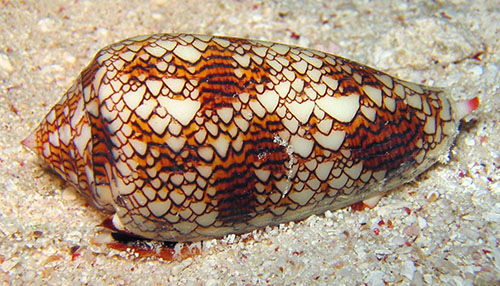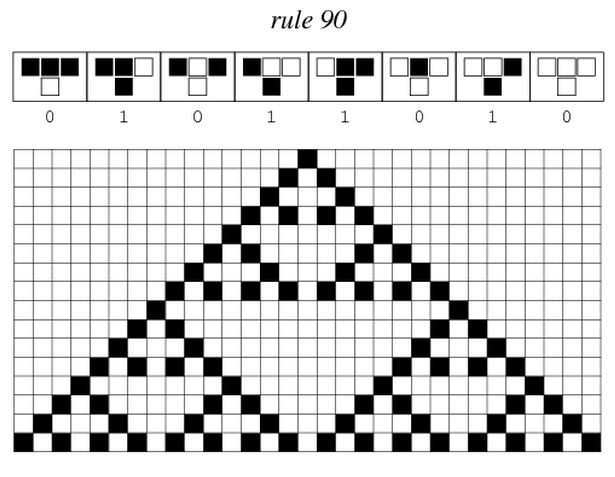Team:ETH Zurich/project/overview/summarysimple
From 2014.igem.org
(Difference between revisions)
(Created page with "700px You might be wondering where these patterns on snea snail shells come from. What if they would come from a simple rule, followed by all cells...") |
|||
| Line 96: | Line 96: | ||
selected bit. | selected bit. | ||
</body> | </body> | ||
| - | |||
| - | |||
| - | |||
| - | |||
| - | |||
| - | |||
| - | |||
| - | |||
| - | |||
<script> | <script> | ||
| Line 137: | Line 128: | ||
}; | }; | ||
</script> | </script> | ||
| + | |||
| + | </html> | ||
Revision as of 09:49, 2 September 2014
 You might be wondering where these patterns on snea snail shells come from. What if they would come from a simple rule, followed by all cells on the shell ?
You might be wondering where these patterns on snea snail shells come from. What if they would come from a simple rule, followed by all cells on the shell ?

Automaton Explorer
Automaton Explorer
rule: 30
start:
From MathWorld:
"A cellular automaton is a collection of 'colored' cells on a grid of
specified shape that evolves through a number of discrete time steps
according to a set of rules based on the states of neighboring cells." This
example explores binary, nearest-neighbor, one-dimensional automata, of
which there are 256 (28) possible rules. The eight possible
outcomes for the current rule are shown across the top; click to toggle the
selected bit.
 "
"